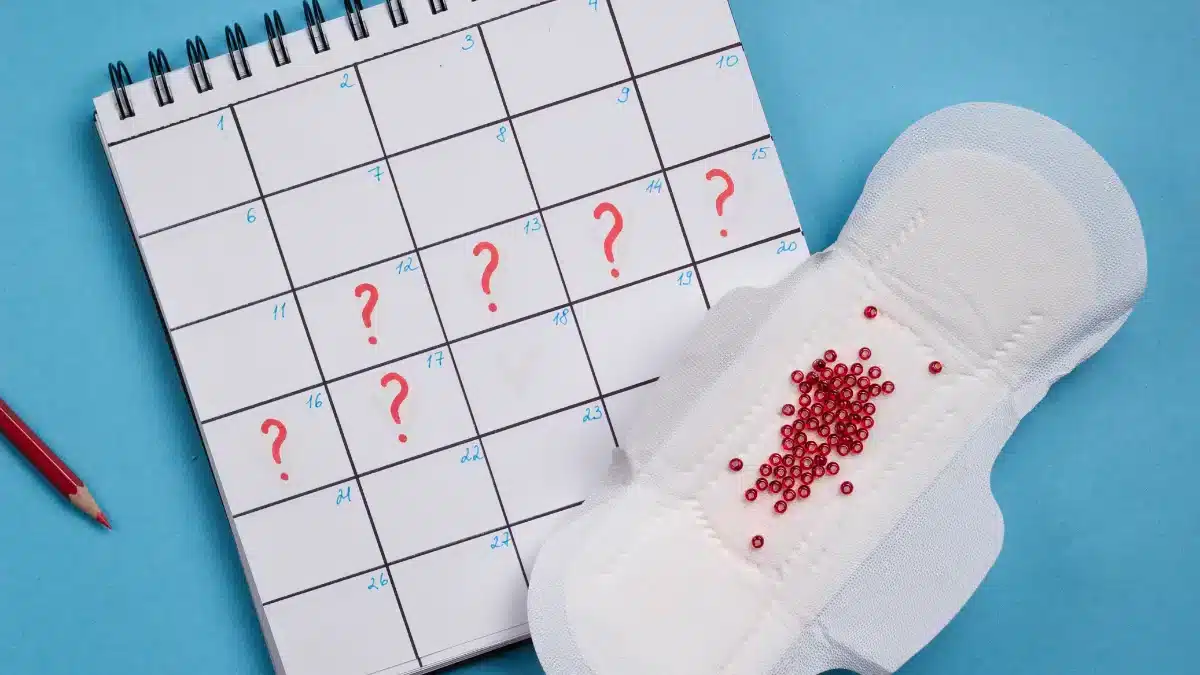Understanding Vaginal Bleeding: Spotting vs Period
When it comes to women’s health, it is crucial to understand different types of vaginal bleeding.
One common area of confusion is distinguishing spotting and a regular menstrual period.
Spotting is light vaginal bleeding, while a period involves regular, usually heavier menstrual bleeding.
In this comprehensive article, we will understand the distinctions between spotting vs period and explore the causes, symptoms, and when to seek medical attention. So read on.
Spotting vs periods overview
A comprehensive overview of spotting vs periods includes:
| Criteria | Spotting | Period |
|---|---|---|
| Definition | Light vaginal bleeding between periods or during early pregnancy | Monthly vaginal bleeding in reproductive-age women |
| Flow | Minimal, often not requiring pads or tampons | Heavier, necessitating pads or tampons |
| Color and Consistency | Light pink or brown spotting | Bright red flow |
| Duration | Shorter, lasting a few hours to a few days | Typically 3 to 7 days |
| Clotting | Less common, if present, involves smaller clots | Relatively common, with larger blood clots |
| Causes | Implantation bleeding during early pregnancy, birth control side effects, infections, structural issues, PCOS, trauma | Hormonal fluctuations, reproductive health, Menopause |
What is spotting vs period
A menstrual period, often called a “period,” is the monthly vaginal bleeding experienced by women of reproductive age.
The average menstrual cycle typically spans 28 days, although it is important to note that variations in cycle length are quite common.
On the other hand, spotting refers to light vaginal bleeding or brown discharge between menstrual periods or during early pregnancy.
Its minimal flow characterizes it, often so light that it does not necessitate pads or tampons.
Spotting can be red or brown and typically happens when you are not having your regular period.
How to differentiate between spotting vs period
Distinguishing between spotting and a period can be challenging due to some similarities in timing and symptoms.
However, several key factors can help tell them apart:
Color of spotting vs period
Menstrual bleeding typically appears bright to dark red, resembling what you usually experience during your period.
In contrast, spotting exhibits a much lighter hue, usually a very light pink or rust color.
Amount of bleeding
One of the most prominent distinctions is the amount of bleeding.
Menstrual bleeding is typically heavier, requiring pads or tampons.
In contrast, spotting involves minimal flow, often noticeable only when wiping.
Clotting
Clotting during periods is relatively common and is often associated with menstrual bleeding, resulting in the passage of larger blood clots.
In contrast, clotting is less typical during spotting, and when it occurs, it typically involves smaller clots.
Duration
Spotting typically lasts a shorter duration, ranging from a few hours to a few days.
In contrast, a menstrual period can last three to seven days on average, with the flow often increasing in intensity over the initial days.
Symptoms
Any specific symptoms may not accompany spotting.
However, additional symptoms like abdominal pain, burning during urination, or vaginal discomfort may manifest if they occur due to an underlying medical condition.
On the other hand, menstruation often brings accompanying symptoms such as cramps, pain, and fatigue.
Causes of spotting vs period

There are different causes of spotting and period.
Some of the causes of the menstrual period include:
- Hormonal changes: Regular menstrual periods are primarily regulated by hormonal fluctuations, with the shedding of the uterine lining occurring as a part of the menstrual cycle
- Normal reproductive function: Menstruation is a sign of a healthy reproductive system essential for fertility
- Menopause: As women approach Menopause, hormonal shifts can lead to irregular periods and changes in menstrual flow
Some of the causes of the spotting include:
- Implantation bleeding: One common cause of spotting is implantation bleeding, which occurs when a fertilized egg attaches to the uterine wall during early pregnancy
- Birth control: Some birth control methods, especially when newly initiated or switching types, can lead to spotting as a side effect
- Infections: Sexually Transmitted Infections (STIs) and other infections of the reproductive organs can result in spotting
- Structural issues: Noncancerous growths such as uterine fibroids or polyps in the cervix can lead to unpredictable bleeding and instances of spotting
- Polycystic Ovary Syndrome (PCOS): PCOS can disrupt normal menstrual cycles, leading to irregular periods and spotting
- Trauma: Physical trauma, including rough sexual intercourse or sexual assault, can result in vaginal bleeding or spotting
When to seek medical attention

While spotting is often benign, there are instances when it is vital to consult a healthcare professional:
- Continuous spotting: If spotting does not stop and becomes constant, especially during pregnancy
- Abnormal vaginal bleeding: Any unusual vaginal bleeding, whether spotting or occurring during Menopause
- Concerning symptoms: If spotting comes with worrying symptoms like heavy bleeding, intense pain, or fever
Takeaway
Spotting and menstrual periods involve vaginal bleeding, but they differ in several ways.
Menstrual periods are the monthly bleeding experienced by women of reproductive age, lasting 3-7 days and often requiring pads or tampons.
Spotting, on the other hand, is lighter, shorter, and may not require any sanitary products.
It can occur between periods or in early pregnancy.
Distinguishing factors include color (periods are bright red while spotting is lighter) and the amount of bleeding (periods are heavier).
Additionally, clotting is more common in periods, and spotting tends to be shorter in duration with fewer associated symptoms.
Consult a healthcare professional if you have continuous or concerning spotting.
Frequently Asked Questions
What does spotting look like vs period?
Spotting is light and often appears as a faint pink or rust color. It’s minimal and may not need pads or tampons. In contrast, a period is heavier, with bright to dark red blood, requiring sanitary products like pads or tampons.
How do I know if it is spotting or my period?
You can differentiate between spotting and your period by examining a few factors. Periods are usually heavier, requiring pads or tampons, while spotting is much lighter, often not needing any products. Period blood is bright red, while spotting is lighter, like pink or rust.
Is spotting a sign of pregnancy?
Spotting can sometimes be a sign of early pregnancy, known as implantation bleeding. It occurs when a fertilized egg attaches to the uterine wall. However, it is not always a definitive sign of pregnancy.
Is spotting counted as day 1 of a period?
Spotting is not typically counted as day 1 of a period. Day 1 of your period is usually considered the first day of full menstrual flow, where you must use pads or tampons. Spotting is much lighter and often occurs before or after your period.
WowRx uses only high-quality sources while writing our articles. Please read our content information policy to know more about how we keep our content reliable and trustworthy.






